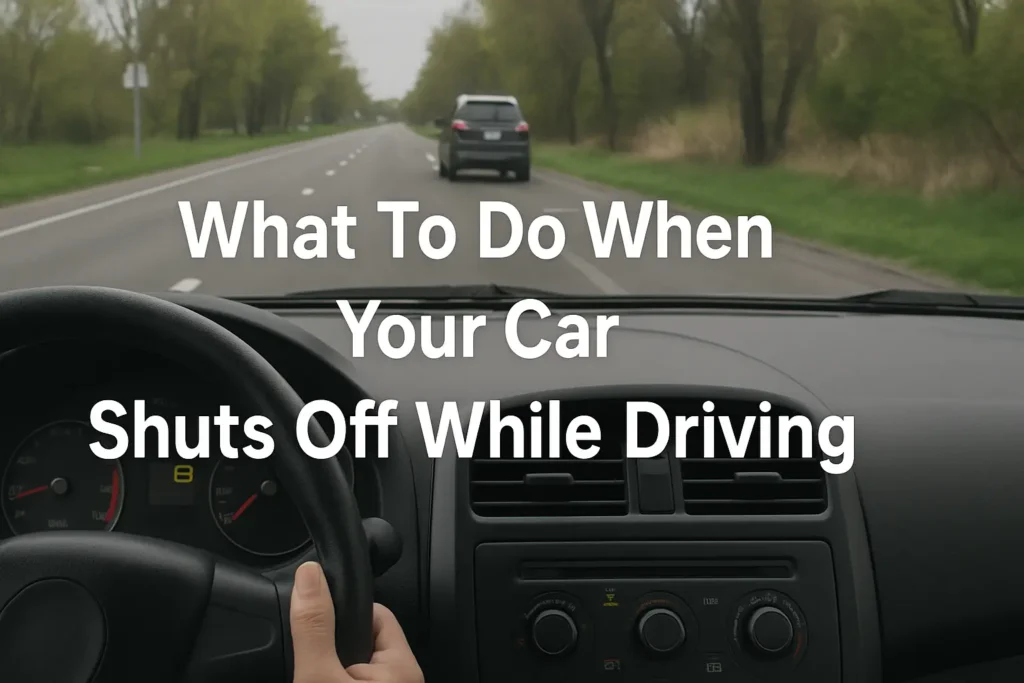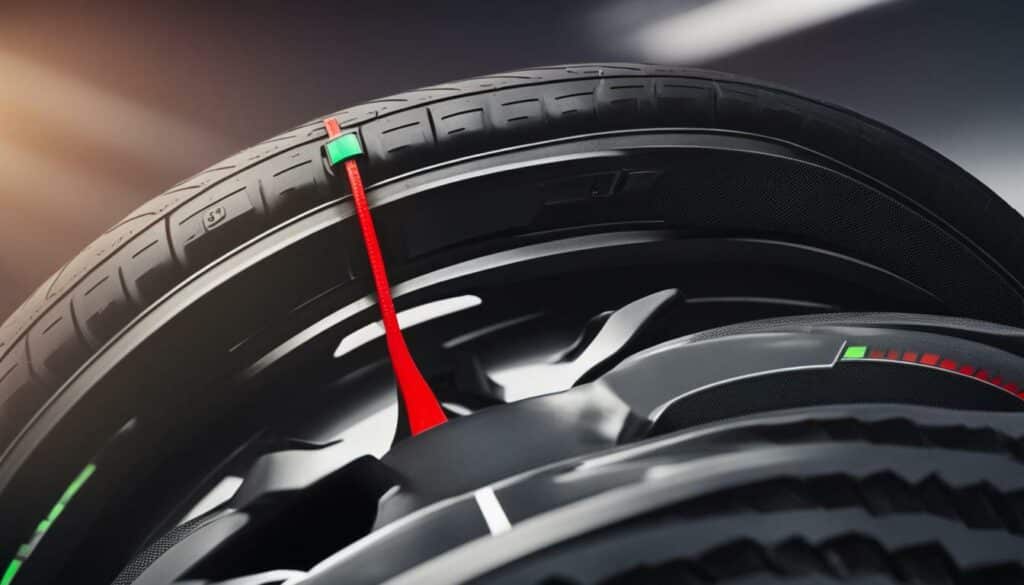Ever been cruising down SH1 and suddenly your engine cuts out? Let’s dive into why your car shuts off while driving and how to fix it fast.
A stutter, a sputter, then silence. It’s not just worrying—it’s dangerous. I’ve seen it happen to mates and customers at Kiwi Motor Hub, and it’s always a shock. In this article, I’ll share the top causes, simple checks you can do, and solutions to keep you safe on New Zealand roads.
Why your car shuts off while driving
I remember the first time I experienced this: I was pulling onto the motorway, foot down, and bam engine gone. Car shuts off while driving, leaving me coasting toward the shoulder. Heart racing, I asked myself: what went wrong? I’ve narrowed it down to a handful of usual suspects.
Main reasons your car shuts off while driving
When your car shuts off while driving, it’s usually one (or more) of these culprits:
- Fuel supply issue: blocked filter, failing pump, or an empty tank.
- Electrical fault: dead battery, faulty alternator, or broken wiring.
- Ignition problem: worn spark plugs, bad coil packs, or a busted crank sensor.
- Engine management glitch: a malfunctioning ECU, limp mode, or sensor errors.
- Overheating: extreme temperature causing a safety shutdown.
Let’s unpack each and talk solutions.
Fuel supply faults: Keeping the juice flowing
When car shuts off while driving, fuel supply is first on my checklist. Without steady petrol or diesel reaching the engine, it will simply die.
Blocked fuel filter
A clogged filter starves the engine. Over time, debris builds up, restricting flow.
- Symptom: engine sputters under load, then dies.
- Quick check: listen for the fuel pump; a struggling whirr hints at a backed-up filter.
- Fix: replace the filter every 30,000–50,000 km (check your manual). It’s a cheap part that saves hassle.
Failing fuel pump
A weak pump can’t maintain pressure.
- Symptom: intermittent power loss, then cranks but won’t fire up.
- Test: measure fuel pressure with a gauge—should meet manufacturer spec.
- Solution: install a quality OEM or OEM-equivalent pump.
Empty or contaminated tank
Believe it or not, cross-contamination or low fuel levels cause shutdowns.
- Tip: avoid running under 1/8 tank—keeps sediments from swirling into the pump.
- Action: drain or flush if you suspect contaminated fuel; refill with fresh.
Electrical glitches: Powering your ride
Modern vehicles rely on stable voltage. When your car shuts off while driving, a faulty electrical system often hides behind the scenes.
Worn battery or bad connection
If your battery can’t hold a charge, it’ll let the engine stall.
- Check: test battery voltage (should be ~12.6V at rest). Inspect terminals for corrosion.
- Repair: clean clamps with a wire brush; replace battery if older than 4–5 years or failing load tests.
Faulty alternator
The alternator charges the battery and powers electronics. When it fails, voltage drops.
- Symptom: dim headlights, warning lights, then engine cuts out.
- Test: running voltage should be 13.8–14.4V. Below that? Alternator at fault.
- Solution: replace with a quality remanufactured unit and check belts for tension.
Wiring and grounds
Loose or damaged wires can kill power to critical sensors.
- Look for: frayed insulation, rodent damage, loose connectors.
- Prevent: secure wiring harnesses; use dielectric grease on connectors to avoid corrosion.
Ignition headaches: Sparking issues
Without spark, there’s no combustion. Let’s see why car shuts off while driving could trace back to ignition.
Worn spark plugs
Plugs wear down, gap widens, spark weakens.
- Clue: misfires, poor idle, rough running before shutdown.
- Routine: change every 60,000–100,000 km (check with your manual).
Faulty coil packs or ignition leads
Bad coils or leads kill spark.
- Symptom: random cutouts, error codes like P030X.
- Fix: swap coils/boots one at a time to identify the culprit, then replace.
Failed crankshaft or camshaft sensor
The ECU needs position data to time ignition. No data = no engine.
- Issue: sensor failure often throws codes P0335 (crank) or P0340 (cam).
- Action: scan with an OBD2 tool; replace defective sensor and clear codes.
Engine management: The brain’s playing up
Your ECU (engine control unit) juggles signals. If it senses danger or confusion, it may shut the engine off.
Limp mode activation
In serious sensor errors, limp mode protects components by cutting power.
- Signs: reduced speed, warning light glow, possible shutdown.
- Remedy: scan the ECU for fault codes. Fix the root cause—often a sensor or wiring issue.
Software glitches or dirty connectors
ECU and injector connectors can corrode.
- Action: inspect and clean with electronic contact cleaner.
- Update: some manufacturers release ECU software updates; check with your dealer or a reputable workshop.
Overheating shutdowns: Keeping things cool
Excess heat isn’t tolerated. Your engine can cut out to avoid damage.
Low coolant or leaks
A small leak can eventually leave the block hot enough to trigger a safety shutdown.
- Check: coolant level, pressure-test the system for leaks.
- Fix: replace hoses, clamps or the radiator if needed, then bleed the system correctly.
Thermostat or fan failure
A stuck thermostat or dead electric fan means no proper coolant flow or air circulation.
- Symptoms: temperature gauge rising, heater blowing cold, AC failing under load.
- Solution: swap the thermostat and test the fan’s operation.
Quick troubleshooting steps on the side of the road
When car shuts off while driving, keep calm and follow this checklist:
- Safely pull over: indicator on, hazard lights on, find a safe spot.
- Check dash lights: is the battery light on? Engine light?
- Listen & look: any unusual smells, leaks, or sounds?
- Fuel gauge: are you really out of juice?
- Try a restart: if it fires, drive slowly to the nearest workshop.
- Call for help: if it won’t restart or you’re unsure, ring roadside assistance.
Preventative maintenance tips from Kiwi Motor Hub
I can’t stress this enough: regular checks will save you roadside dramas.
- Scheduled servicing: stick to the service intervals—engine, transmission, cooling, and electrical systems all need attention.
- Fluid checks: every month, I top up engine oil, coolant, brake fluid, and transmission fluid.
- Battery & alternator: test annually or before any long trip—especially on harsh Kiwi roads.
- Filter changes: air, fuel, cabin—clean filters reduce strain on engines and pumps.
- Spark plugs & ignition service: keep ignition parts fresh to avoid misfires.
Comparison of common causes and fixes
| Cause | Symptom | DIY Check | Professional Fix |
|---|---|---|---|
| Blocked fuel filter | Engine sputters under load, then dies | Listen for weak pump sound | Replace filter |
| Faulty alternator | Battery light on, dim lights, stalls | Test voltage with multimeter | Replace alternator |
| Worn spark plugs | Misfires, rough idle | Inspect & gap plugs | Swap plugs & coil boots |
| Failing fuel pump | Car cranks but won’t stay running | Fuel pressure gauge test | Replace pump |
| Crankshaft position sensor | Intermittent cutouts, error code P0335 | Scan OBD2 codes | Replace sensor |
| Overheating (coolant leak) | Temperature spike, steam | Visual leak check & pressure test | Replace hoses or radiator |
Staying safe when your engine cuts out
Your priority is safety. Remember these steps:
- Don’t panic: maintain steering control—power steering may drop but you can still steer.
- Use momentum: if you’re in a safe lane, let the car coast to a stop rather than braking hard.
- Alert other drivers: hazard lights on, put out reflective triangles if you have them.
- Stay clear of traffic: exit the vehicle on the passenger side if possible and wait off the road.
Why Kiwi drivers love reliable servicing
In New Zealand, distances between towns can be vast. You don’t want to be stuck when your car shuts off while driving. That’s why at Kiwi Motor Hub, I emphasise:
- Honest quotes: no hidden charges, only the repairs you need.
- Quality parts: OEM or better—nothing shonky under my hood.
- Skilled technicians: trained in the latest diagnostics for all makes.
- 24/7 support: emergency call-outs to get you mobile again.
My final thoughts
No one plans for car shuts off while driving, but being prepared makes all the difference. With basic checks, routine maintenance, and a trusted workshop on speed-dial, you’ll minimise risks and downtime. Next time you’re worried your engine might cut out, remember: knowledge is power. Keep your ride well-serviced, stay alert to warning signs, and you’ll stay safe on our Kiwi roads.
Safe travels




